生成驱动的两种编译方式
本机:Windows7(64-bit)
试验机:Windows7(32-bit)/WindowsXP
1、利用wdk自带环境编译,这个比较简单,直接build就行
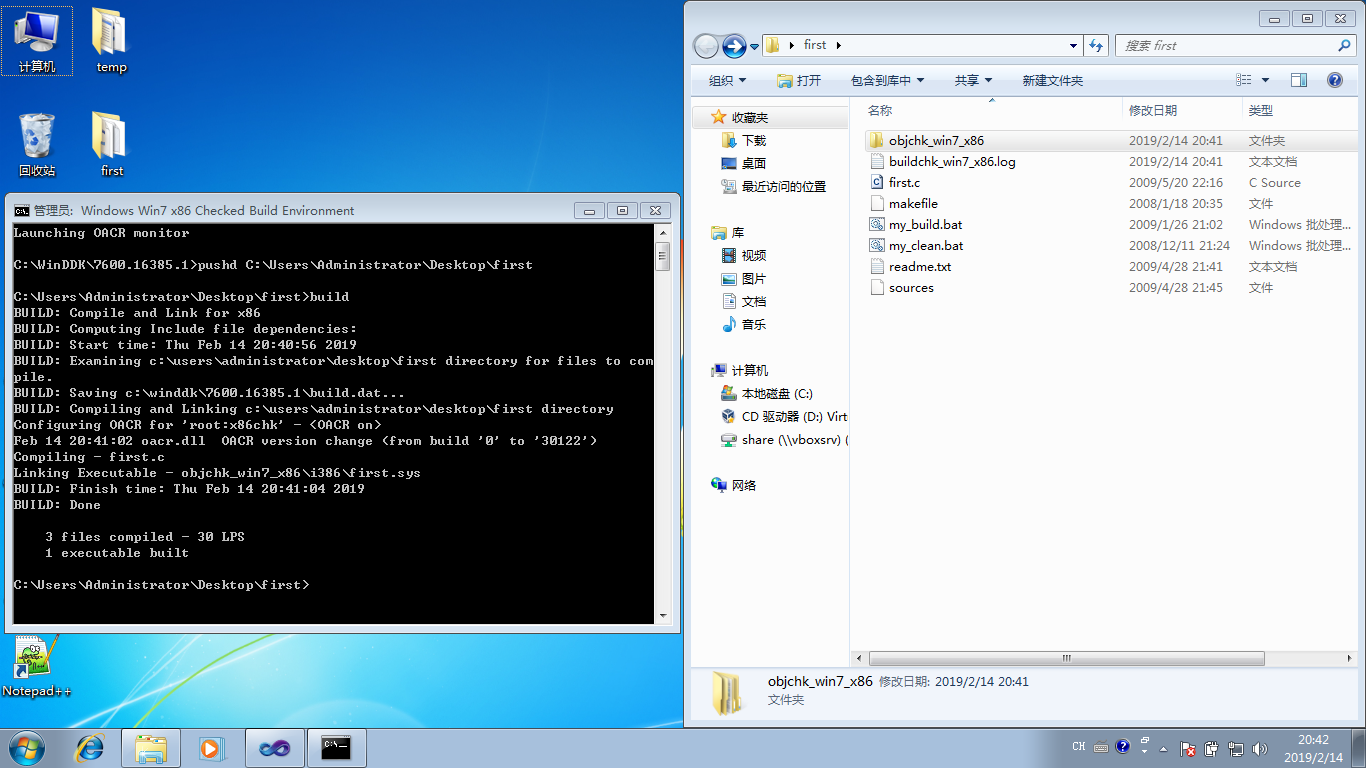
makefile
!IF 0
Copyright (C) Microsoft Corporation, 1999 - 2002
Module Name:
makefile.
Notes:
DO NOT EDIT THIS FILE!!! Edit .\sources. if you want to add a new source
file to this component. This file merely indirects to the real make file
that is shared by all the components of Windows NT (DDK)
!ENDIF
!INCLUDE $(NTMAKEENV)\makefile.def
sources
TARGETNAME=first
TARGETTYPE=DRIVER
SOURCES=first.c
TARGETPATH=obj
2、用vs2010+wdk7600编译,这个就比较复杂点,需要配置环境
(1)新建空项目,命名为FirstDriver
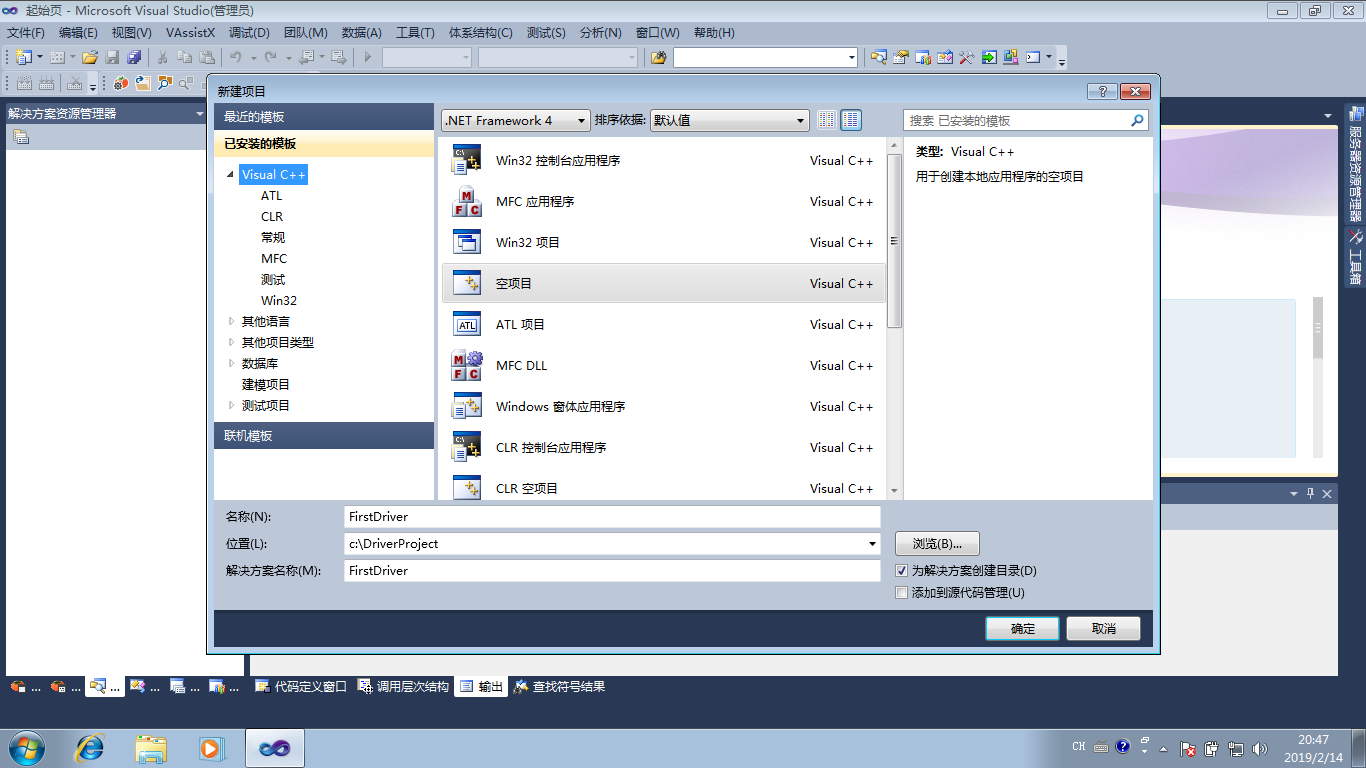
(2)生成,配置管理器

(3)新建Driver
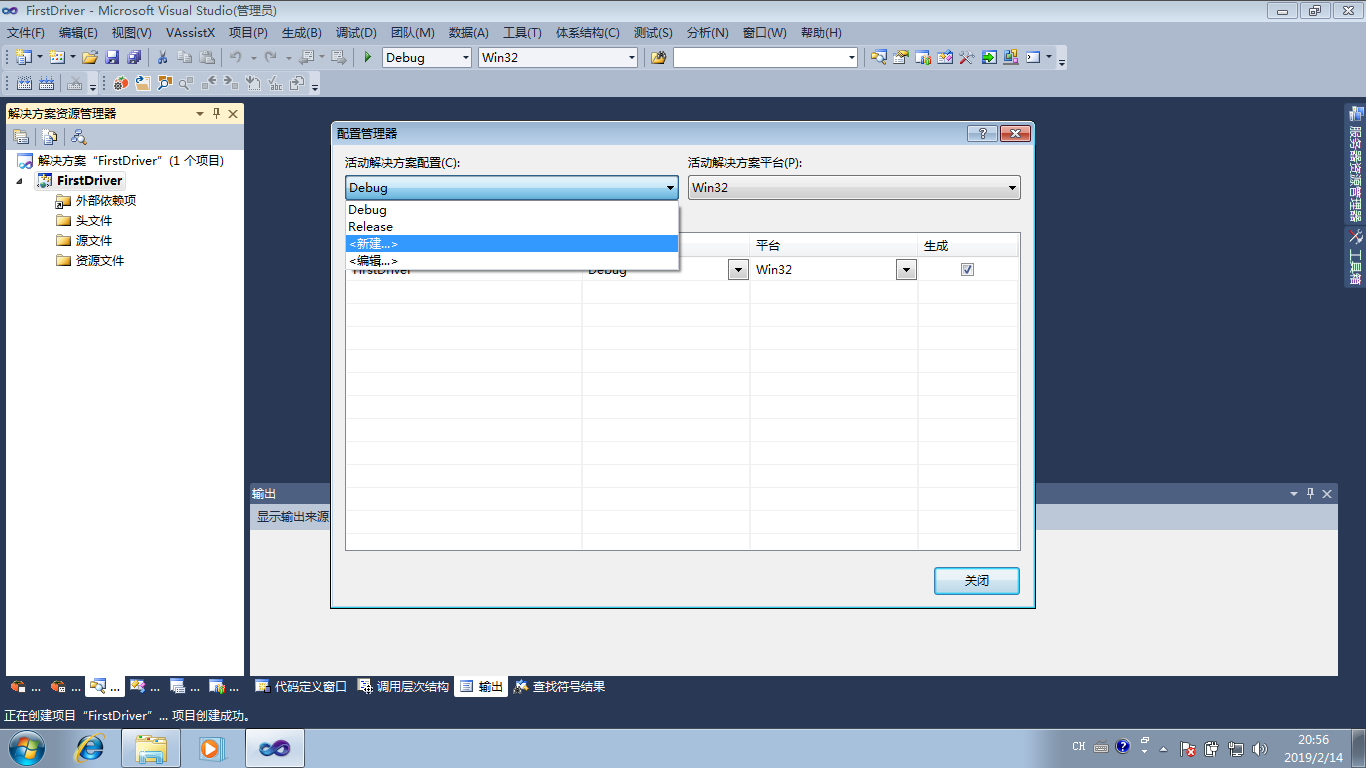
(4)新建Driver,确定,关闭
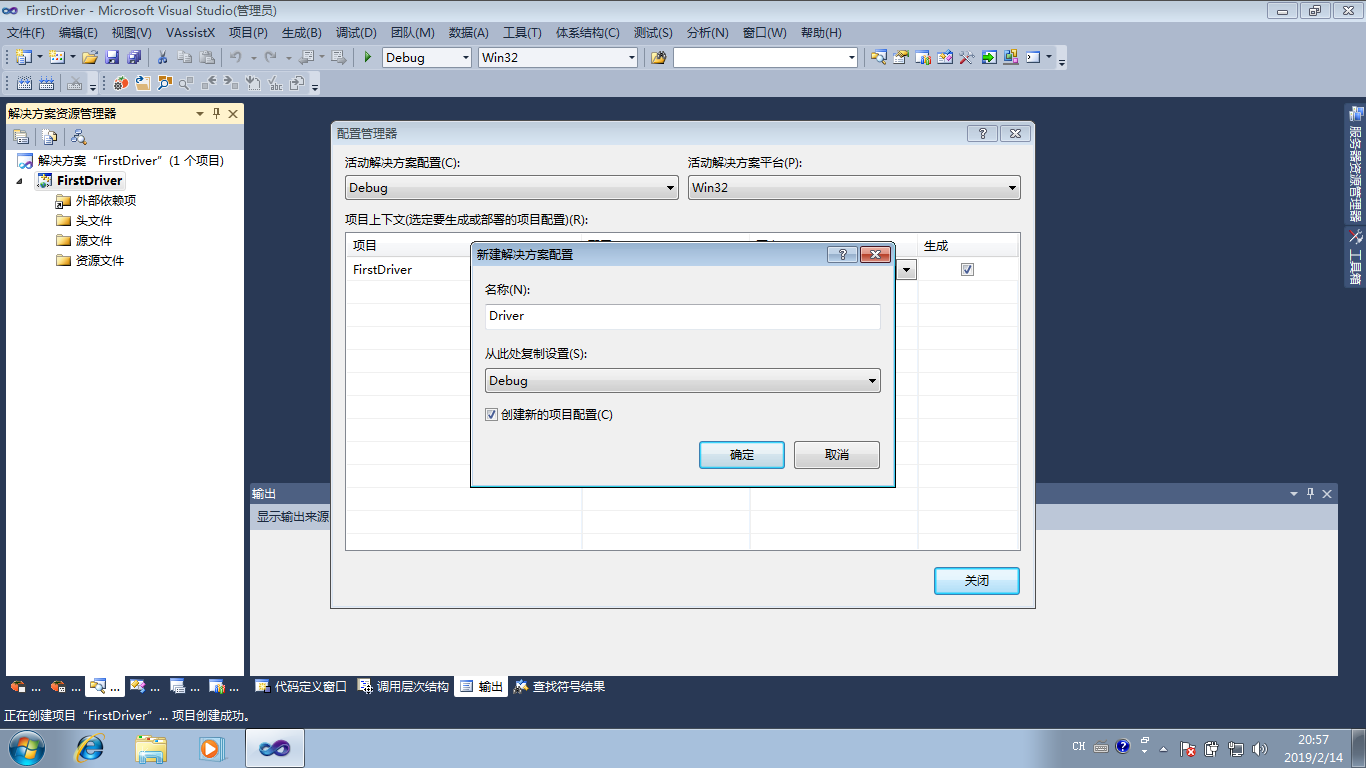
(5)属性管理器
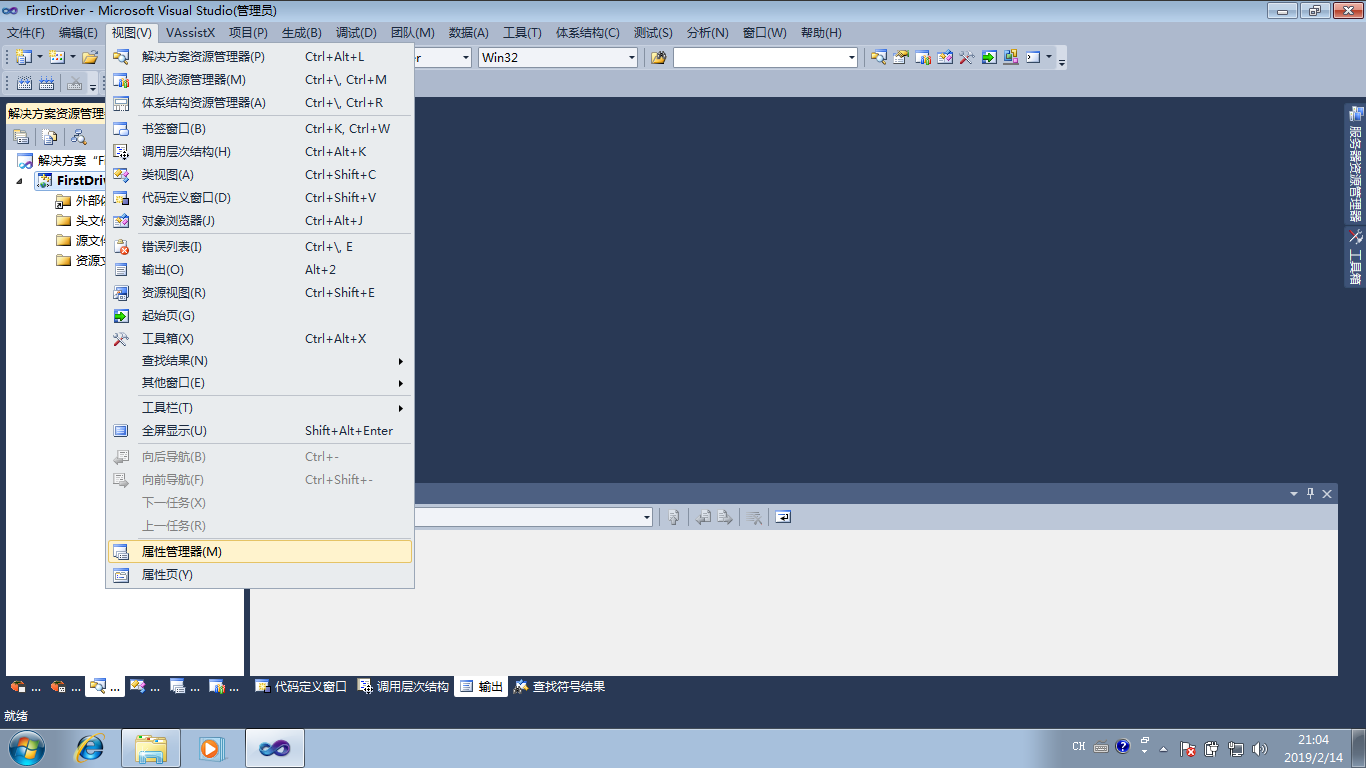
(6)添加属性表
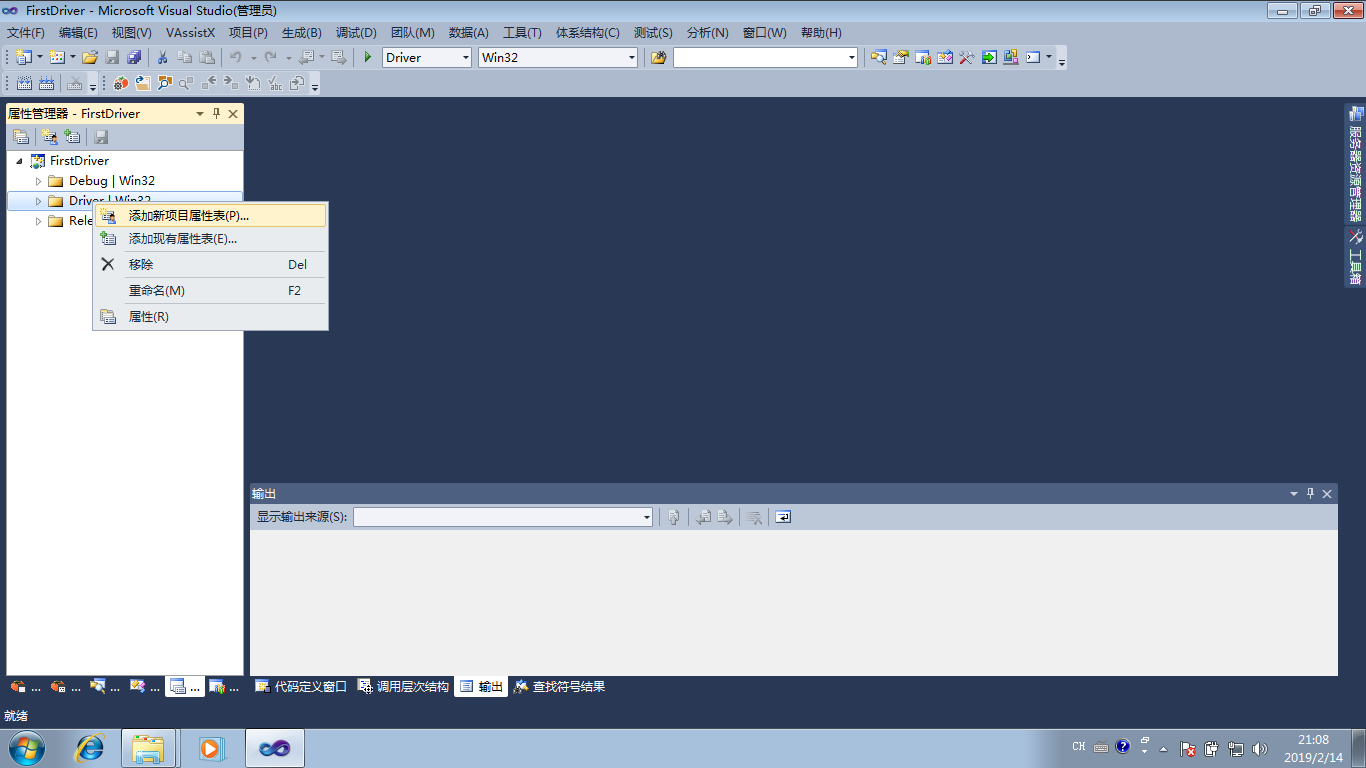
(7)命名为DriverTemplate.props
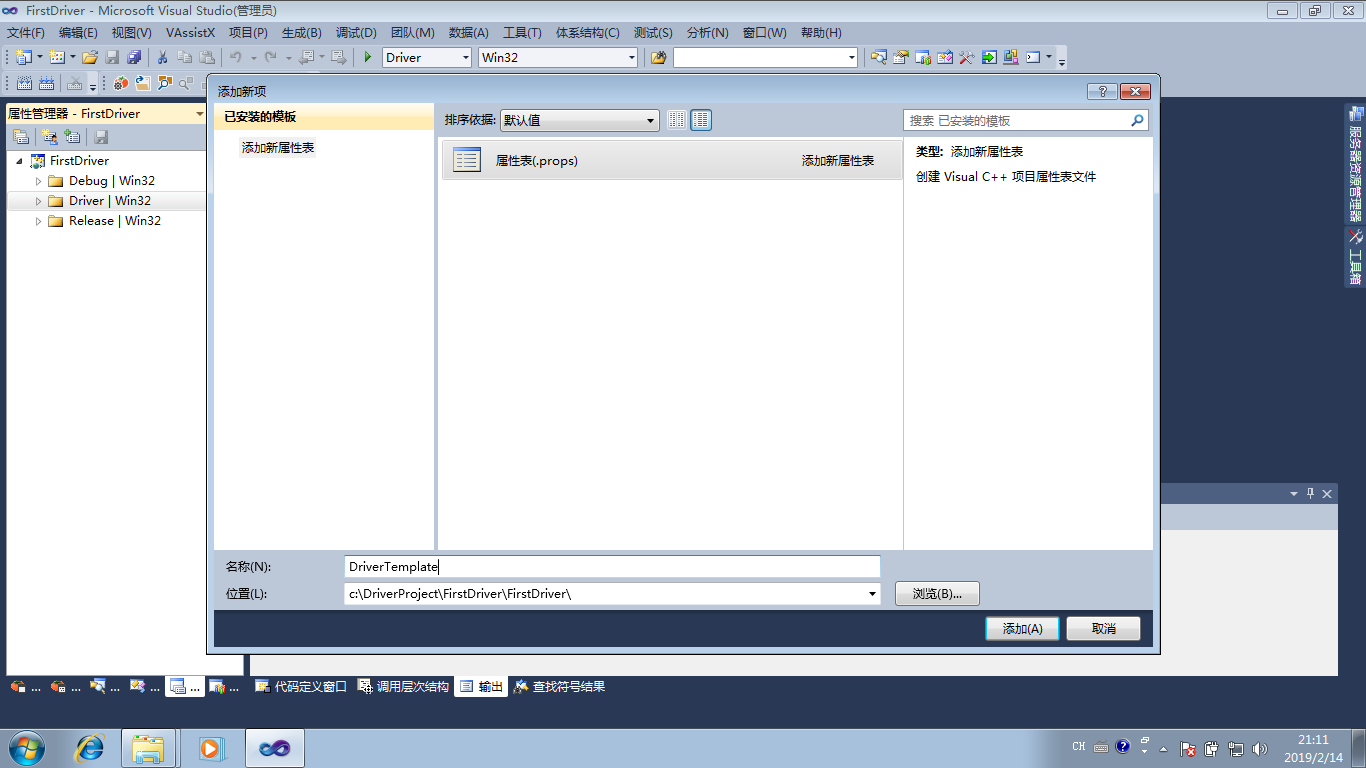
(8)保存工程,将DriverTemplate.props内容改为如下:
<?xml version="1.0" encoding="utf-8"?>
<Project ToolsVersion="4.0" xmlns="http://schemas.microsoft.com/developer/msbuild/2003">
<ImportGroup Label="PropertySheets" />
<PropertyGroup Label="UserMacros" />
<PropertyGroup>
<ExecutablePath>C:\WinDDK\7600.16385.1\bin\x86;$(ExecutablePath)</ExecutablePath>
</PropertyGroup>
<PropertyGroup>
<IncludePath>C:\WinDDK\7600.16385.1\inc\api;C:\WinDDK\7600.16385.1\inc\ddk;C:\WinDDK\7600.16385.1\inc\crt;$(IncludePath)</IncludePath>
</PropertyGroup>
<PropertyGroup>
<LibraryPath>C:\WinDDK\7600.16385.1\lib\win7\i386;$(LibraryPath)</LibraryPath>
<TargetExt>.sys</TargetExt>
<LinkIncremental>false</LinkIncremental>
<GenerateManifest>false</GenerateManifest>
</PropertyGroup>
<ItemDefinitionGroup>
<ClCompile>
<PreprocessorDefinitions>_X86_;DBG</PreprocessorDefinitions>
<CallingConvention>StdCall</CallingConvention>
<ExceptionHandling>false</ExceptionHandling>
<BasicRuntimeChecks>Default</BasicRuntimeChecks>
<BufferSecurityCheck>false</BufferSecurityCheck>
<CompileAs>Default</CompileAs>
<DebugInformationFormat>ProgramDatabase</DebugInformationFormat>
</ClCompile>
<Link>
<AdditionalDependencies>ntoskrnl.lib;wdm.lib;wdmsec.lib;wmilib.lib;ndis.lib;Hal.lib;MSVCRT.LIB;LIBCMT.LIB;%(AdditionalDependencies)</AdditionalDependencies>
</Link>
<Link>
<IgnoreAllDefaultLibraries>true</IgnoreAllDefaultLibraries>
<EnableUAC>false</EnableUAC>
<SubSystem>Native</SubSystem>
<EntryPointSymbol>DriverEntry</EntryPointSymbol>
<BaseAddress>0x10000</BaseAddress>
<RandomizedBaseAddress>
</RandomizedBaseAddress>
<DataExecutionPrevention>
</DataExecutionPrevention>
<GenerateDebugInformation>true</GenerateDebugInformation>
<Driver>Driver</Driver>
</Link>
</ItemDefinitionGroup>
<ItemGroup />
</Project>
(9)添加第一个驱动源码,编译,成功!
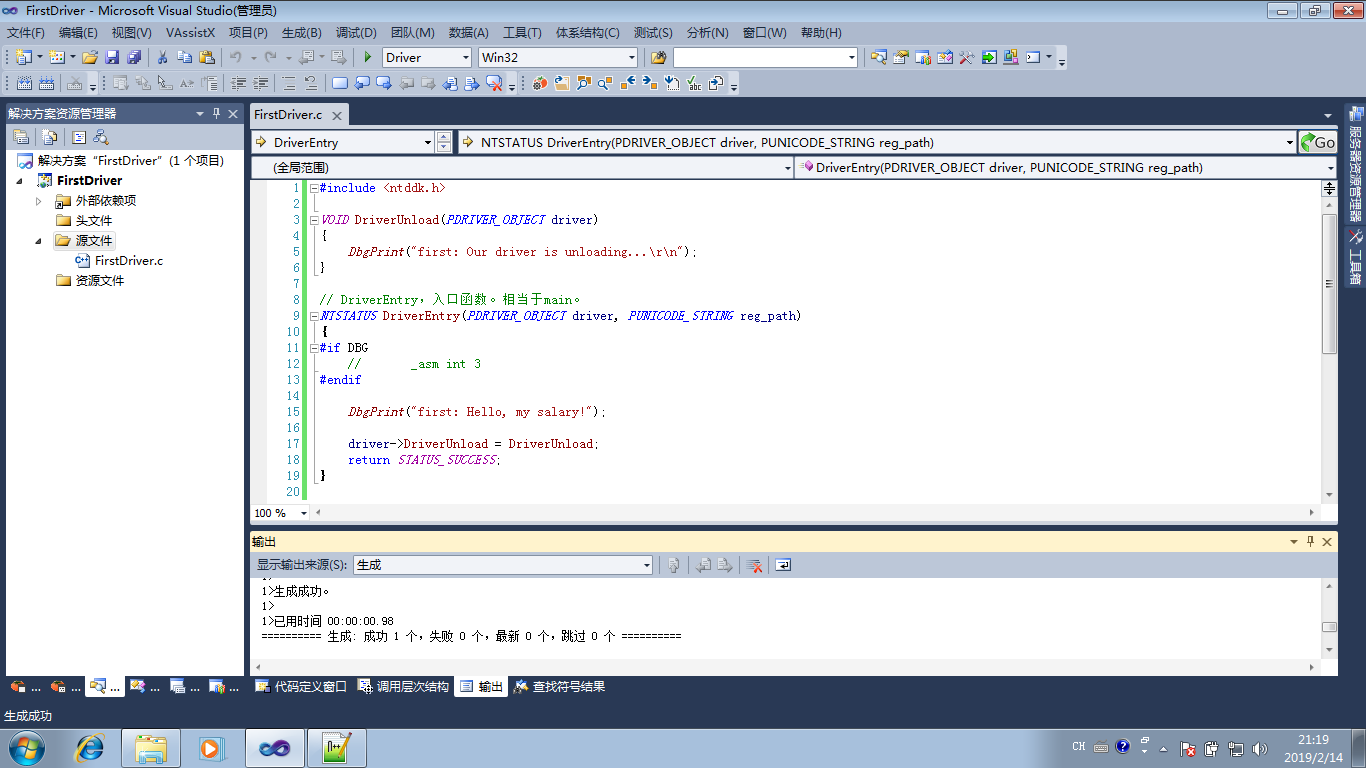
#include <ntddk.h>
VOID DriverUnload(PDRIVER_OBJECT driver)
{
DbgPrint("first: Our driver is unloading…");
}
// DriverEntry,入口函数。相当于main。
NTSTATUS DriverEntry(PDRIVER_OBJECT driver, PUNICODE_STRING reg_path)
{
#if DBG
// _asm int 3
#endif
DbgPrint("first: Hello, my salary!\r\n");
// 设置一个卸载函数便于这个函数能退出。
driver->DriverUnload = DriverUnload;
return STATUS_SUCCESS;
}
注意:
1->>wdk路径要根据个人具体来配置
2->>该props文件内容是为Windows7-32配置的,如果要配置Windows7-64要重新改动,请自行谷歌



